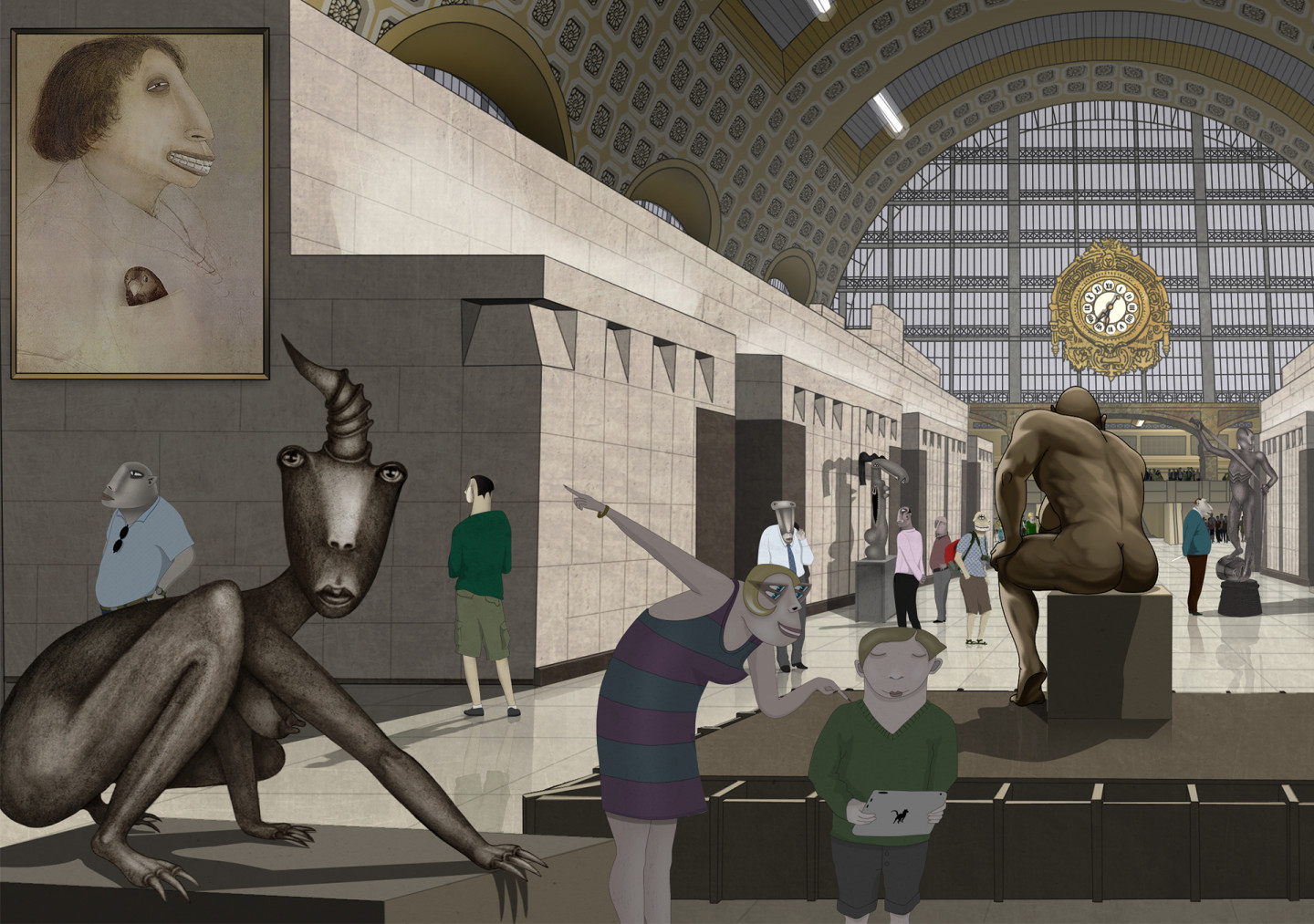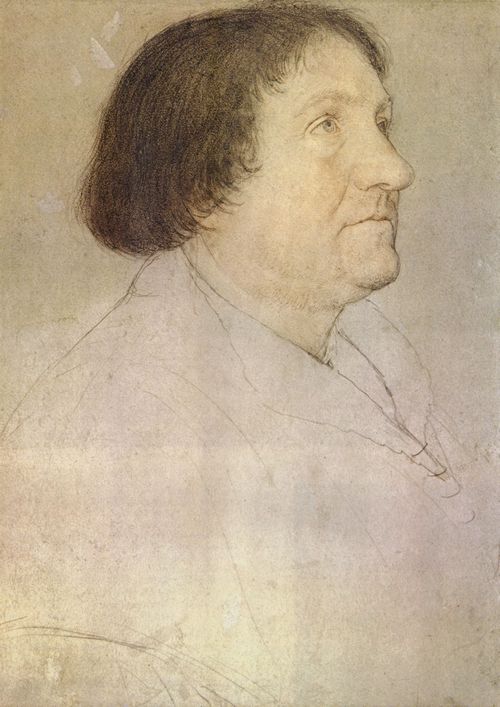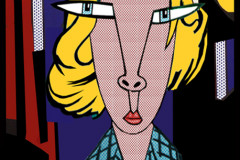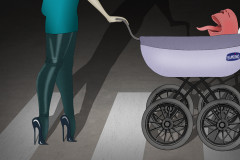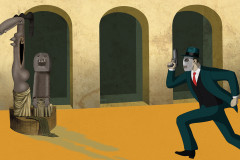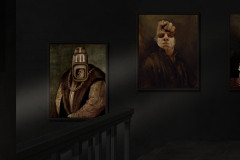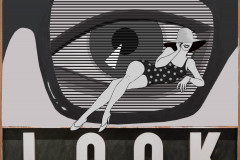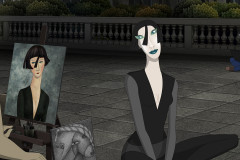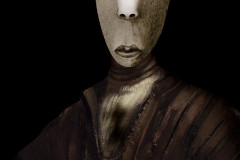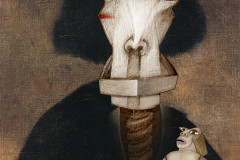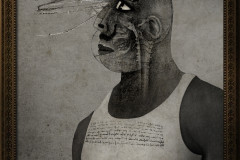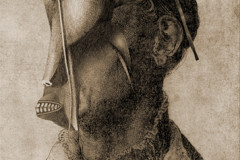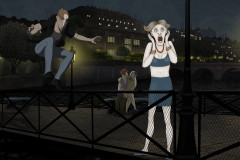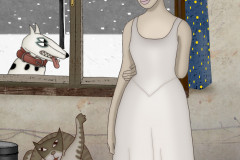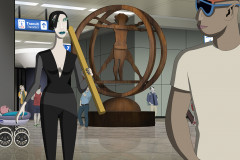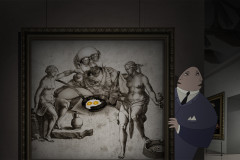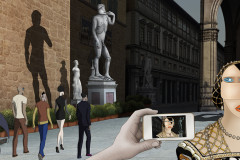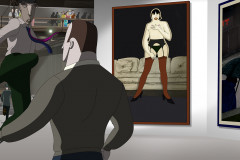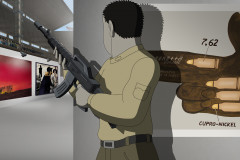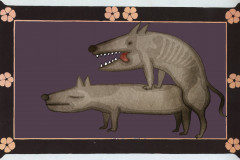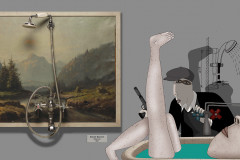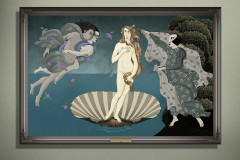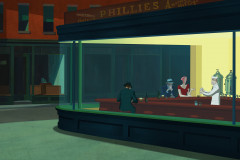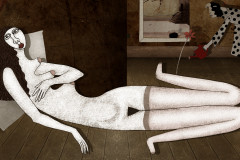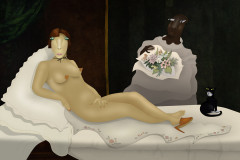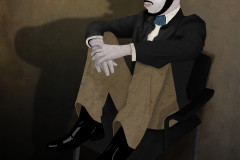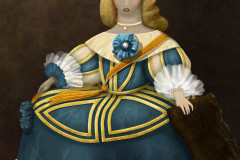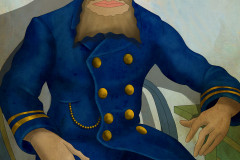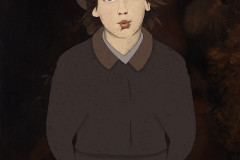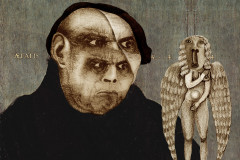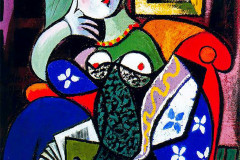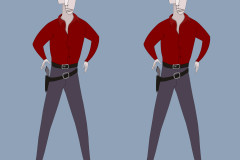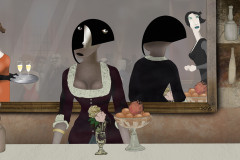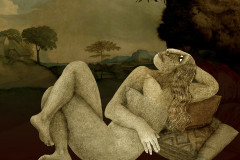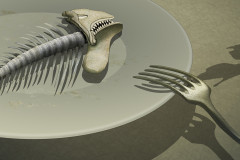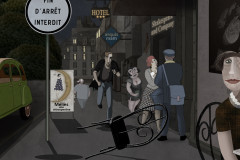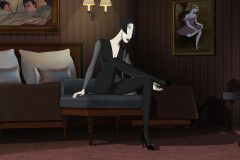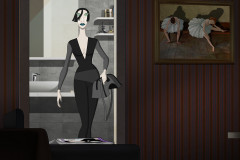ifj. Holbein, Hans (1497-1543): Jacob Meyer zum Hasen portréja, 1525-26 k. (kréta, papír, 38,3 x 27,5 cm, Kunstmuseum, Bázel). A német reneszánsz legkiválóbb portréfestője számos portrét festett a bázeli polgármesterről. E tanulmányként készült krétarajz is kiváló példája Holbein karakterábrázoló tehetségének. A mű karikaturisztikus verziója a filmben a Musée d'Orsay falán lóg, a jó szeműek egy kis madarat is észrevehetnek a polgármester mellényzsebében – vajon ugyanaz a madárka figyel itt, aki Mimi terápiájában oly fontos szerepet játszik?
Jacob Meyer zum Hasen nevét két dolog miatt szokták emlegetni a történelem és művészettörténet könyvek: ő volt Bázel első nem nemesi származású polgármestere, eredeti foglalkozása pénzváltó volt, s 1516-21-ig vezette meglehetős gazdasági sikerekkel a várost. Másrészt pedig ő az első név szerint is ismert megbízója ifj. Hans Holbeinnak, aki mielőtt VIII. Henrik angol király udvarában megbecsült festő lett, Bázelben alapozta meg hírnevét a gazdag polgárok és értelmiségiek között. A polgármester magáról és családjáról több portrét is rendelt nála, sőt a városháza (azóta lebontott) tanácstermének kifestésével is megbízta. Ez a portrérajz tanulmányként készült egy nagyobb oltárhoz (az ún. Darmstadti oltárhoz), amely Máriát ábrázolja a gyermek Jézussal, s előttük Jacob Meyer térdel családtagjaival. A családfő felfelé irányuló átszellemült tekintete már ezen a rajzon is megjelenik, a kész oltárképen természetesen Máriát nézi. A polgármestersége után a reformációt ellenző bázeli katolikusok élére álló Meyer ezzel a megrendeléssel is bizonyítani kívánta buzgó katolicizmusát. A portrérajznak különös hatást ad, hogy a csupán egy-két vázlatos vonallal felskiccelt felsőtesten részletesen kidolgozott, színes krétával finoman tónusozott arc ül, mintha szemünk előtt elevenedne meg egy több száz éve élt ember.
Hans Holbein the Younger (1497–1543): Portrait of Jacob Meyer zum Hasen, c. 1525–26 (chalk on paper, 38.3 x 27.5 cm, Kunstmuseum, Basel). One of the finest portraitists of the German Renaissance, Holbein created several likenesses of Jacob Meyer zum Hasen, the mayor of Basel. This chalk drawing—originally a preparatory study—is a striking testament to Holbein’s gift for character portrayal. In Ruben Brandt, Collector, a caricatured version of the portrait hangs on a wall in the Musée d'Orsay. Sharp-eyed viewers may spot a small bird in the mayor’s vest pocket—is it the same one that plays a symbolic role in Mimi’s therapy sessions?
Jacob Meyer zum Hasen is remembered for two reasons in history and art history alike: he was the first non-noble mayor of Basel, originally a money changer by trade, who governed the city with notable economic success between 1516 and 1521; and he was also the first known named patron of Hans Holbein the Younger. Before finding fame in the court of Henry VIII, Holbein built his career in Basel, painting wealthy citizens and humanist scholars. Meyer commissioned several portraits of himself and his family from the artist, as well as the now-lost decoration of Basel’s town hall council chamber.
This particular drawing was a study for a larger religious work, the so-called Darmstadt Madonna, in which the Virgin Mary and Christ Child are depicted with Meyer and his family kneeling before them. Even in this early sketch, the mayor’s upward, devotional gaze—directed toward Mary in the final painting—is already present. After his political career, Meyer became a prominent defender of Catholicism in Reformation-era Basel, and this commission served to publicly affirm his piety.
The portrait’s visual power lies in its striking contrast: the face is rendered with delicate shading and colored chalk, while the upper body is merely suggested with a few sketchy lines—making the image feel as if it is emerging into life from the page. It’s as though a man who lived 500 years ago is returning our gaze.






